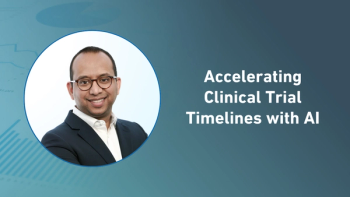
Using Global Patient Data to Design Smarter, More Inclusive Clinical Trials
Exploring how large-scale patient databases and AI analytics can accelerate site activation, strengthen recruitment, and improve trial design from the start.
In a recent video interview Applied Clinical Trials, Gen Li, PhD, MBA, president, Phesi, highlighted results from the company’s new analysis on global inequity in breast cancer development. He discussed the geographic concentration of breast cancer trial leaders in the US and China, with a positive outlook on global diversity. Operational barriers in lower-income countries were attributed to traditional business models, with opportunities to implement a more patient-centric approach by leveraging artificial intelligence (AI) and machine learning. Li addressed the lack of local KOLs in underserved areas by emphasizing the importance of identifying local leaders. He also stressed the need to redistribute trial workloads and improve recruitment by using AI to identify and activate new sites.
The interview transcript was lightly edited for clarity.
ACT: How can data analytics and AI help sponsors identify and activate new sites and investigators in lower-resource settings, without compromising trial efficiency or data quality?
Li: This is the way we are seeing how this thing works, right? Over the years, we’ve built a database covering over 300 million patients from around the world. Just imagine that—if we get a synopsis from our clients, or a product from our clients, we can actually [be] guided by those documents to recruit patients from that [pool of] 300 million patients.
So instead of [waiting] several years to see who you are recruiting and trying [to] aspire to treat, in a matter of weeks, we’re going to be able to get those patients in front of you—[to] allow you [to] meet your patients before you even start the trial. That way, you can use [those insights] to improve your design, to avoid amendments.
Because the data [are] contextualized, we know who the physicians are [that are] working with the patients we aspire to treat. Then you can have a much higher-level position to recruit those investigators to work with you. That, in itself, will improve recruitment, the enrollment rate, and shorten your overall cycle time.
Moreover, we are able to foresee how your control arm is going to behave—what your safety and efficacy profile [is] going to look like for your control arm. So those are the things that can be [part of] a digital end, right? Those are the things you can use [either] to replace part—or sometimes all—of the control arm.
But that’s not the only benefit. You can also better interpret your results. If you’re not able to do an external control arm, you can actually [use this data] to much better guide your future development by incorporating those insights from that digital tool.
There are many different ways we can benefit—keeping the patient at the center, improving the design of the trial, and selecting better investigative sites to work with. Those are the things we are doing to try to improve outcomes.
Newsletter
Stay current in clinical research with Applied Clinical Trials, providing expert insights, regulatory updates, and practical strategies for successful clinical trial design and execution.






.png)



.png)



.png)
.png)
